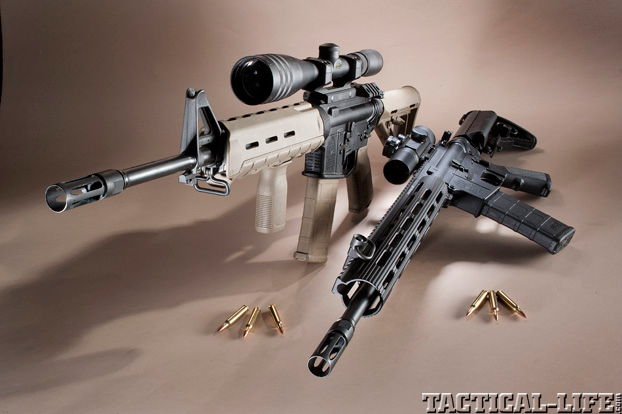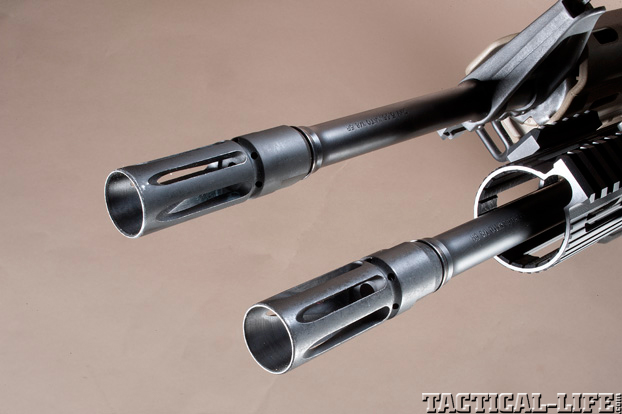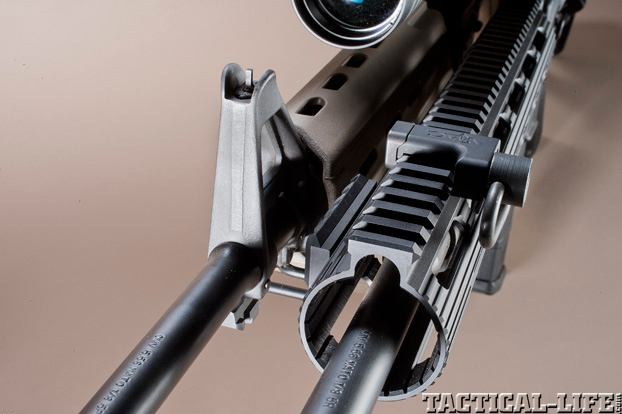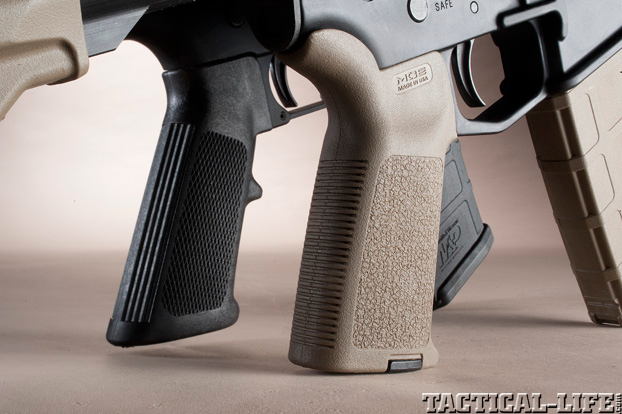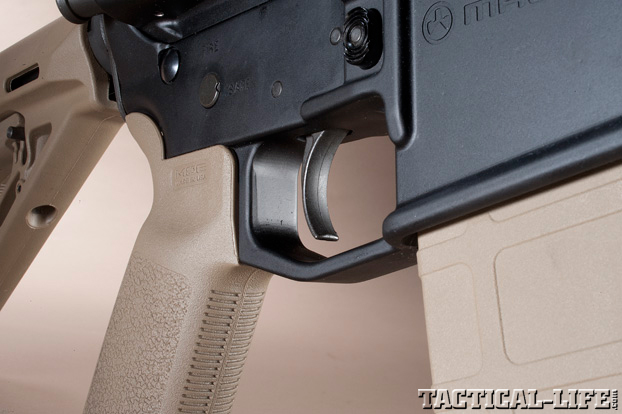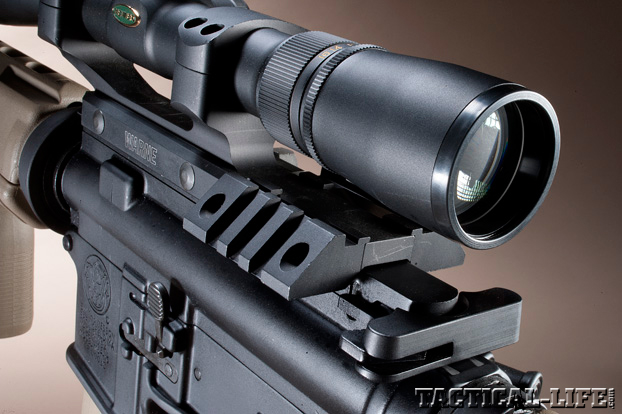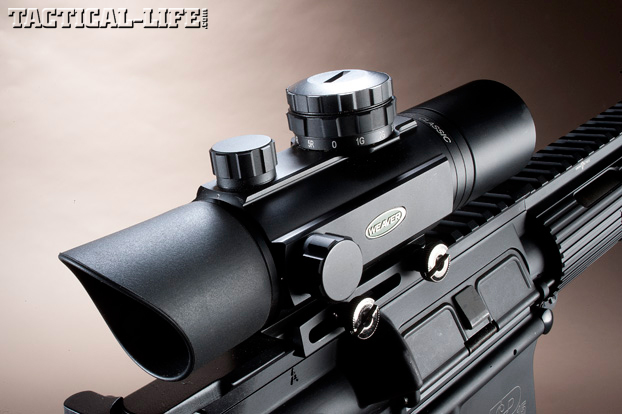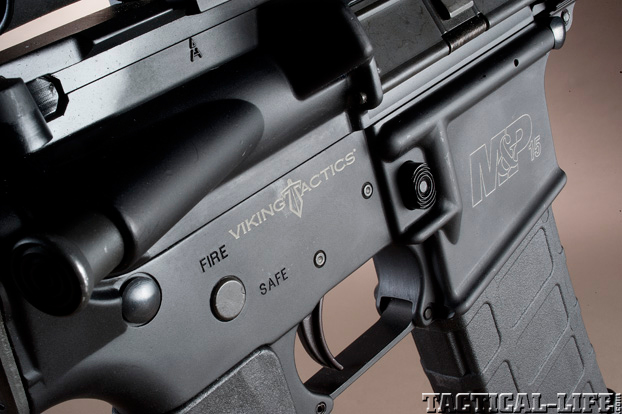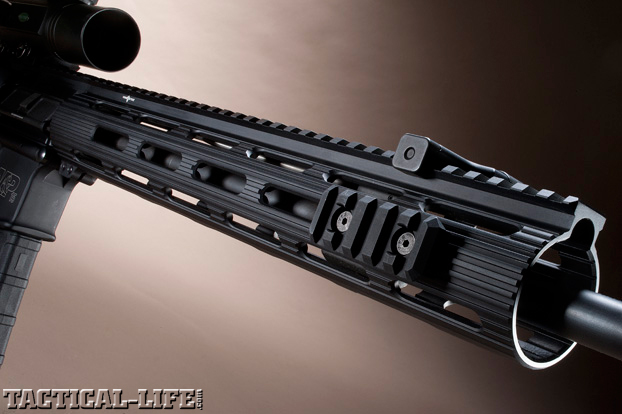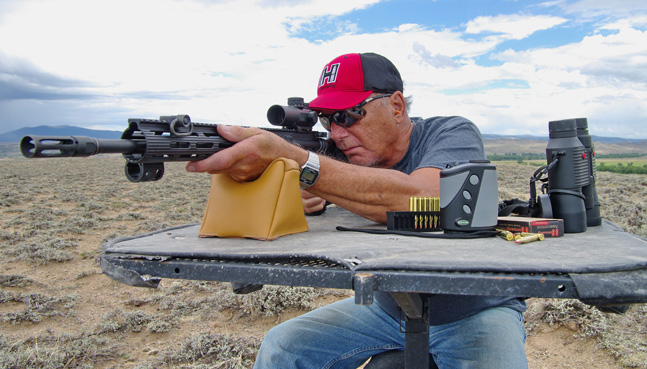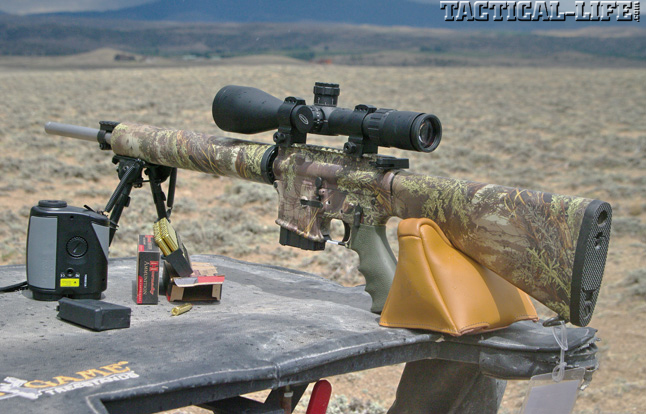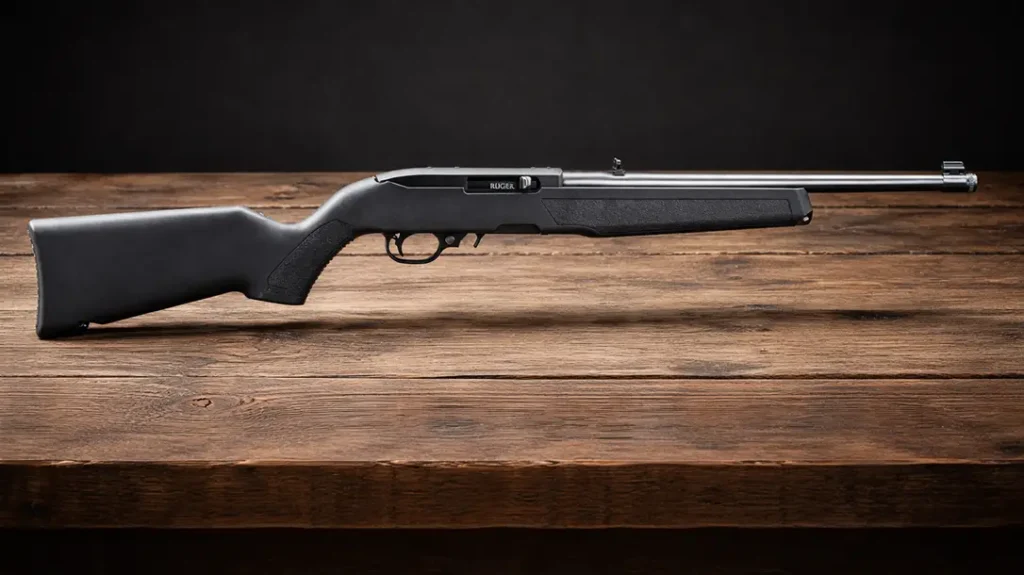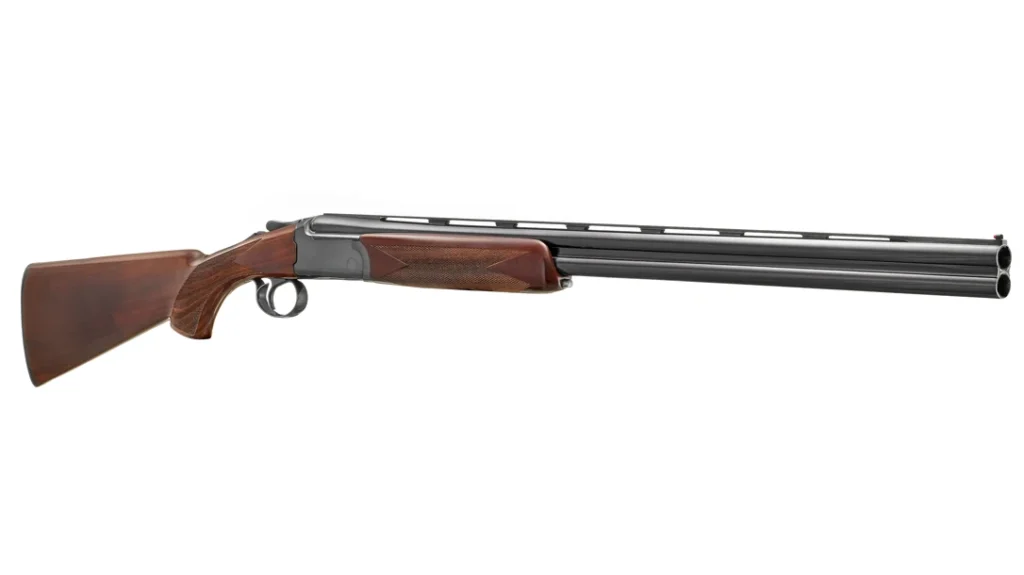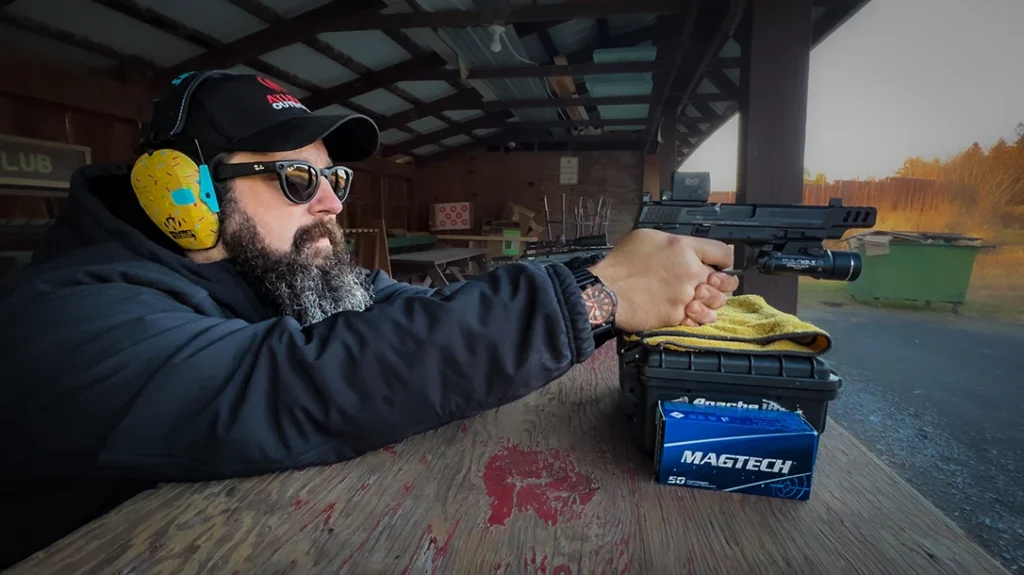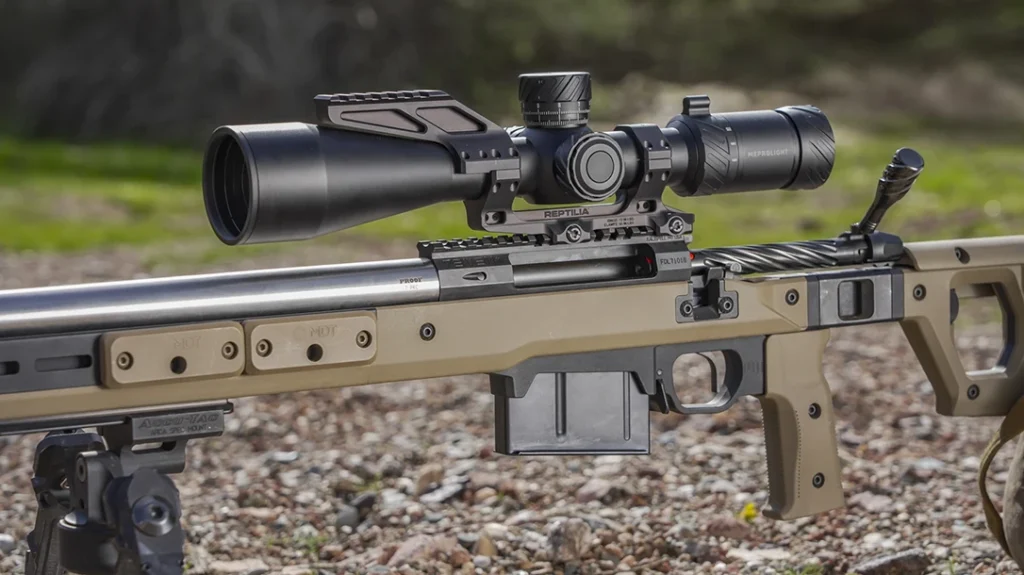Until fairly recently, my idea of a dedicated prairie-rat rifle was a heavy-barreled bolt action with, preferably, a solid-bottom receiver (in other words, a single-shot chambered in .223 Rem. with a standard 1-in-12-inch twist rate). It would have a light 2-pound trigger and a bench-/prone-style, laid-up fiberglass stock with a wide, flat forend. My optics would be a fixed-power scope of no more than 16X, and the gun would be equipped with a simple fine-crosshair reticle. I have such a rifle: a Remington 40X from their custom shop, with a Nightforce 15X scope. It’s superbly accurate and I’ve owned it for quite a number of years. The problem is that I’ve rarely gotten an opportunity to use it—I may never.
Precision On The Prairie
Living in the East, I’ve never found the time to head West and devote several days to just hunting rodents. I’m not that dedicated, and the finite amount of time I can take off over the course of any given year I devote to big-game hunting. Nevertheless, I have attended many p-rat shoots over the years, all of which have been industry-sponsored events with furnished guns—that’s how I was introduced to ARs. I guess you could say I was kind of forced into it because my interest has always been in traditional rifles, as reflected in my writings. Not that I had anything against black guns, assault rifles or para-military rifles, all of which are terms that have been used negatively to describe guns that differ (in their somewhat menacing appearance) from traditional semi-auto rifles like the Remington Model 750. Indeed, the Remington is chambered for cartridges more powerful than what any AR-10 or AR-15 can digest. That’s why I often wonder why even so-called conservative guys like Bill O’Reilly can’t seem to grasp that there is no difference between a politically correct rifle like the Remington 750 and those evil “assault” rifles.
Anyway, not only was I, by sheer circumstances, forced into the world of ARs, but my editors had also pressured me, saying these guns had become far too popular for me to ignore. I may be an old dog, but I ain’t a stupid one, and if I have to I can learn new tricks!
Advertisement — Continue Reading Below
My baptism of fire, then, was on the prairie-rat towns of the American West, what I had thought was the last place to take an AR. After all, these guns were not that accurate, or so I had assumed. Boy, was I wrong! I still vividly recall when I first sat down at a bench with an AR: it was a Bushmaster Varmint model that I was told was pre-zeroed and ready to go. I’ve heard that too many times, so I went over to the makeshift 100-yard range they had set up to see for myself. The first three shots I took to verify zero were clustered in a neat little cloverleaf that you could cover with a nickel, about 1.5 inches high. “A fluke,” I thought. So I fired another group that wasn’t quite as tight as the first but still under an inch. Now one three-shot group can indeed be a fluke, but a nearly as tight second had me wondering; a third group as small as the first removed all doubt. The gun I had in my hand at that moment was close to being a half-MOA rifle with the Hornady factory ammo we were using. Figuring that gun was an exceptional specimen, I made sure I was first in the gun room each morning, so that I could claim that same gun for the next two days.
That incident was more than five years ago, and I have since had the opportunity to shoot over 30 ARs in the field and on the range. I can honestly say that the average accuracy level of those 30-some guns is probably higher than the last 30 bolt-action rifles I’ve tested. Talk about an epiphany.
VTAC II and MOE Mid
My most recent exposure to the use of ARs on p-rats was this past July, when Smith & Wesson debuted two new variations of its extensive and still growing AR lineup. The venue was the Spur Ranch (spuroutfitters.com; 307-327-6505) in Encampment, Wyoming, where there were examples of the M&P15 VTAC II and the M&P15 MOE Mid models among others that we had at our disposal. Both guns had S&W’s mid-length gas system, which the company claims offers lower recoil and better accuracy, but shooting a dozen or so rounds through each gun to confirm they were pre-zeroed is hardly enough to prove those claims. All I know is that both the examples I tried were shooting under an inch with the Hornady ammo provided.
Advertisement — Continue Reading Below
Both guns sport 16-inch barrels with 1-in-8-inch twist rates and 5R rifling and are treated with Melonite hardcoat exterior finishes. They also share the same chrome-plated gas keys and bolt carriers, S&W’s Enhanced flash suppressor systems and black anodized receivers. The 5R rifling, incidentally, is the same used in Thompson-Center’s Icon, Venture and Dimension bolt-action rifles. The 5R consists of five rather than six lands and grooves, with each land’s width being greater at its base. (I guess you could describe them as flattop pyramids in cross section.) By reducing the normally 90-degree angle at the base of each land to 60 degrees, you eliminate the sharp inside corners that tend to clog with copper fouling. The result is a barrel that’s less prone to fouling and easier to clean and has a slight increase in velocity via the reduced bore friction.
But where these guns differ from one another—considerably, I might add—is in their details. The VTAC is the result of a collaborative effort with Viking Tactics, and for the MOE Mid, S&W teamed up with Magpul Industries. What distinguishes the VTAC is its Troy 13-inch Extreme TRX handguard, IMod six-position collapsible stock and Geissele Super V 4.5-pound, quick-reset trigger. The Magpul sports a co-branded forged lower receiver with a flared magazine-well opening for faster, surer insertion, and there’s a larger triggerguard bow to accommodate gloved fingers. Magpul also provides the buttstock, the handguard with vertical grip, and the folding MBUS rear sight in conjunction with an M4 A2 post front sight.
It never ceases to amaze me how many aftermarket components and accessories there are for an AR. You can drastically alter an OEM gun with accessories or literally build your own from scratch by specifying every single component, from the upper and lower receivers of piston or gas impingement, to barrel type, length and twist rate. You can also choose your trigger, grip, buttstock, handguard and sights. The combinations are virtually limitless, and yet the basic gun remains the same: an AR is an AR no matter what you do to it!
Advertisement — Continue Reading Below
M&P15 Fire
I had the opportunity to shoot both of the new guns, but the one permutation of the AR that is my favorite is the M&P15 PC. It sports a 20-inch bull barrel, a flattop receiver, a full float Yankee Hill handguard that’s of the same diameter as the Delta ring, and a 4.5-pound, two-stage match trigger. The whole thing is covered in a generic camo pattern that’s primarily green and brown in color. It’s about as “civilian” as you can get an AR to look, but it and the .300 Whisper are the only such variants among the 19 others models that comprise the M&P15 line—all other are basic black except for the new Magpul, which has its buttstock, grip and handguard finished in a medium tan color.
Being seated behind an AR with a prairie-rat town in front of you is about as much fun as you can have with your clothes on. Aside from the fun factor, I’ve learned there are several advantages to using an AR over a traditional bolt action. For one, after a miss, the mere cycling of the bolt to chamber another round can move the rifle enough so that reacquiring the target can be frustrating. This is due to a couple of reasons, not the least of which is that the higher the scope’s magnification, the smaller the field of view, in which case the slightest movement of the gun has you looking at a different piece of real estate. Also, during the reloading and the reacquiring of the target, the rat may have moved or gone down on all fours, which usually puts it out of sight in all but the shortest grass.
Other advantages the AR has over the bolt action is that, being gas operated and chambered in light recoiling cartridges like the .223 (5.56mm) or .204 Ruger, you can usually be your own spotter. Again, depending on the scope’s field of view and how distant the target—say beyond 250 yards or so—the gun will have settled back from recoil in time that you can usually see where your last shot impacted, allowing you to make an instant hold correction. With a spotter behind you calling your misses, it’s not unusual to get off three or four shots within a couple of seconds—that’s impossible with a bolt gun.
Advertisement — Continue Reading Below
As for loads, I’ve come to prefer the various 40-grain offerings that average around 3,800 fps over the heavier 50- and 55-grain options. They shoot flatter and have less recoil, increasing your chances of seeing bullet impact but being more susceptible to wind. Hornady offers a lighter-yet, 35-grain NSX load that exits at 4,000 fps, but I’ve not yet had the opportunity to use it. I’ll bet its terminal performance is spectacular.
I never thought I would say this, but I’ve come to like the .204 Ruger even more than the .223, and for the same reasons just stated: flatter shooting with less recoil. Hornady offers a 24-grain NTX load at a sizzling 4,400 fps and a 42-grain V-Max at 4,225. That, sports fans, is smokin’!
The one thing that hasn’t changed for me is my choice of scope magnification. I still prefer 15 or 16X. Higher magnifications have smaller fields of view and smaller exit pupils, which make image and target re-acquisition slower, and their shallower depth of focus has you fiddling with the image/parallax adjustment more frequently. For me, they also exaggerate atmospheric mirage as well as that which rises off a hot barrel. Nope, 16X is all the magnification I need to make any shot I’m willing to take, no matter what the distance.
Advertisement — Continue Reading Below
Bottom line to all this is that I still believe the accuracy edge will always go to the finely tuned, heavy-barreled bolt gun, but in real-world terms the difference isn’t enough for me to go back, not when I can shoot an AR. For more information, visit smith- wesson.com or call 800-331-0852.
